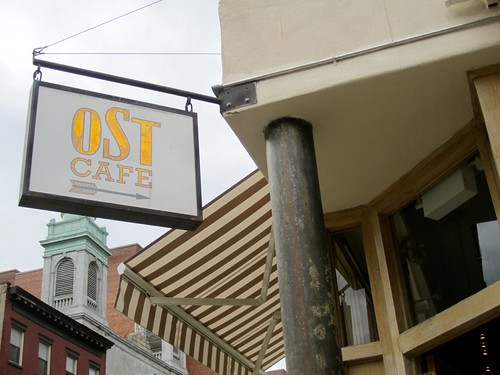 Ken Stein
Ken SteinLast Monday my wife and I were returning home to Williamsburg when the L train suddenly jolted to a stop somewhere between the Third and First Avenue stations. The train was packed, having filled up at Union Square, and we all moaned in chorus at the delay.
As we waited, I teased Wendy about cyber-stalking members of her favorite band, the Bad Plus, who we’d just seen perform. She’d once found a bread recipe on the pianist’s wife’s blog and made it for a dinner party we hosted. It was an innocent appreciation, and joking about it kept me from thinking about having to use the bathroom. After about fifteen minutes, though, passengers began eyeballing each other and sharing the obligatory mutual response: Two full weekends of having to take the shuttle because the train is out of service, and now this.
The elderly woman seated next to me seemed worried after an MTA worker rushed through our car. I told her the exact same thing had happened to me the previous weekend: “Someone probably pulled the emergency brake again.” Read more…
The death of Liz Hooper – the cause of which has still not been determined – rattled the Tompkins Square Park transient community this week. “Things like this scare me,” said Jocelyn, 33, a mother of three who lives on the streets of the East Village. “It makes me really want to change the way I live. It could have been me.” The Pasadena, Calif. native grew up in New Orleans; like Ms. Hooper, she entered the transient community after she began dabbling in drugs. She now spends most of her days panhandling on Second Avenue, in Tompkins Square Park and around Union Square – at night, she sleeps on East 4th Street and occasionally stays in a squat house in Brooklyn. Her two daughters (7 and 4) stay with their grandmother in New Orleans while her 4-month-old son is in foster care. “I want to change my life so that I can be with them,” she said. “The fact that I am not with them is so painful.” Last month, The Local asked Jocelyn to tell us about a typical day.
On Friday, we shared John Vaccaro’s memories of September 11, 2001. Because he isn’t the only the one looking back on that day, The Local asked other Villagers some of the same questions that The Times posed to its readers: What was their strongest memory of 9/11? How did it change them, and America? What did they lose – or gain – because of it? Share your own reflections or reactions here, and if you’ve posted a video to the New York Times YouTube channel, leave that link in the comments.
Back in June, The Local visited the home of John Vaccaro, one of the residents above Mars Bar who was being temporarily relocated so that his building could be replaced by condos. It wasn’t the first time the retired theater director had been displaced. On September 11, 2001, he was living just a few blocks from the World Trade Center while also keeping his loft on Second Avenue. In this video, Mr. Vaccaro describes fleeing ground zero and making an unexpected return to the East Village. Nearly ten years later, on July 21, he would officially move back to John Street, with a clear memory of that fall day.
As a bassist for the indie and art rock group Les Savy Fav, Syd Butler wasn’t satisfied simply touring the globe. In 1999, he founded Frenchkiss Records so the band could release its own recordings, and has since launched the careers of Passion Pit, The Drums and Local Natives. These days, he divides his time between the Lower East Side, where he lives with his wife and two children, and Frenchkiss headquarters in Union Square. Having lived in the area for a decade, Butler says he feels most at home on downtown’s east side. “There’s so much creative energy and the history is really supportive of the arts and expression,” he explains, though that doesn’t necessarily make hometown audiences the easiest to perform for.
“New Yorkers’ expectations are higher,” he says. “When you play New York you’ve got to give it your all.” Expect all that and more when Les Savy Fav perform at the Music Hall of Williamsburg’s 4th Anniversary Celebration on Tuesday, September 6. Until then, on to Butler’s favorites! Read more…
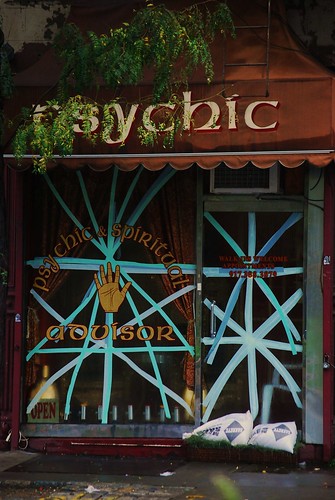 Tim Schreier
Tim Schreier“The world is too much with us,” claimed William Wordsworth, but he didn’t know the half of it. The Weather Channel is too much with us, would be more to the point. Mayor Bloomberg is too much with us. Anderson Cooper is too much with us. Fox News is too much with us. Warnings and dire threats of all kinds are too much with us — e.g. those surrounding “Hurricane Irene,” who/which would have been more accurately described as “Subtropical Depression Irene” by the time she managed to waddle her way up the East Coast in her rain-soaked skirts and finally “hit” New York with the soft, wet slap of a gloved hand. As trees swayed gently and reporters valiantly swallowed their disappointment, we were all far too invested in the story to evacuate the portion of our brain in which she’d taken up residence.
Well, she did rain a great deal. And knocked down some trees and flooded this highway and that subway, but a “hurricane” she was not. Nonetheless she managed to take up most of my weekend – mentally speaking. And by the time she finally cleared town I was flat-out exhausted by her. For two days I had obsessively followed the event-to-come, watching TV, scanning Internet sites, constantly checking The Times’ “Hurricane Tracker” and all the latest updates from FEMA, only to discover that it was all foreplay and no conclusion. Read more…
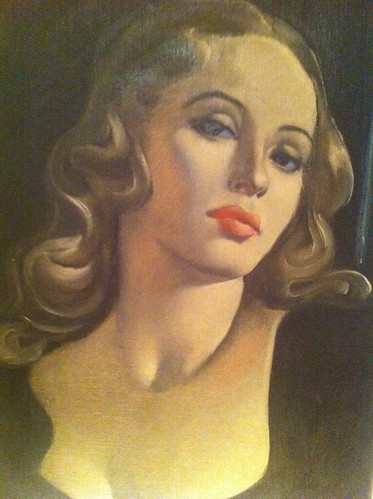 Painting by Lucian Bernhard
Painting by Lucian BernhardDentists are always memorable. Anyone who gets paid to poke around in your mouth is bound to be.
I have had two dentists in the East Village. The first was a man from the Indian state of Gujarat who chewed obsessively on the carcinogenic Indian palate-cleanser known as paan. I will call him “Dr. V.” He is gone now, put out of business after his landlord doubled the rent on his miniscule store-front clinic in Alphabet City. This was a minor tragedy for the neighborhood, for if you had a rotten tooth and no insurance – even no money – Dr. V was your go-to guy.
Dr. V had learned dentistry in India under what he called “the British system,” which he held in high regard, although his feelings about the British themselves were mixed. He was a man of small, delicate stature, about 60 years of age, and had lots of opinions and was keen to share them.
Most of the time, a dentist is someone to whom, by definition, you can only listen, not speak – your side of the conversation being confined to gagging sounds that you hope will not involve drooling. So it helps if the dentist is entertaining. (I did once have an East Village dentist – only briefly, thank God – who talked about nothing but the minutiae of politics in Albany. That was truly abysmal.)
Dr. V.’s conversational canvas was large, and he would lay down the law on every subject imaginable. But I felt he cared about me. He always gave me advice, seemed to look into my mind and soul as much as my mouth, and often he made me laugh – if not always on purpose. Read more…
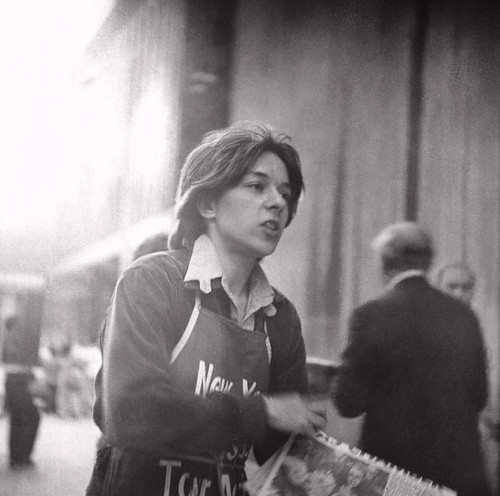 Tim Milk
Tim MilkWith the threat of another recession looming large in the markets, I can’t help but recall another steep downturn, long ago; a terrible time when work was nearly nonexistent. By the summer of 1979 most young people were broke as a joke. But this was not true of a friend of mine, who will hereafter go by the name of “M”
Until M busted a move to help me out, I didn’t have a single prospect. But I had been told, in hushed and reverent tones, that M possessed a secret method of raising cash. M by and by revealed what it was, an absurdly simple scheme, diabolically clever. It involved selling all the joys and sorrows of the world for nothing more than pocket change.
It was the world of the newsboy. Read more…
According to the weather prophets it should have been raining but it wasn’t raining so I went to the Tompkins Square Library to see if I could get Vol. 1 of Proust, but they didn’t have any Proust, and probably never do have any Proust (“Who’s Proust?”), so I decided to take out another novel instead, only to realize I didn’t have a library card, a wallet, or any form of ID, unless you count a cell phone, which I don’t. I did have cash, though.
On to Mast Books, five blocks down Avenue A, but first I encountered… The Racist. A drably turned-out white woman in her thirties, looking like a hipster gone to seed, possibly a junkie. In fact I’d already passed her a few minutes earlier on the way to the library, where I heard her shout racial slurs at more darkly hued people than herself outside the deli on 10th Street, but I wasn’t really paying attention, and frankly it just seemed weird. She looked like a dyed-in-the-wool East Villager. Down on her luck, maybe, but a characteristic member of the neighborhood nonetheless. It was almost unthinkable. Read more…
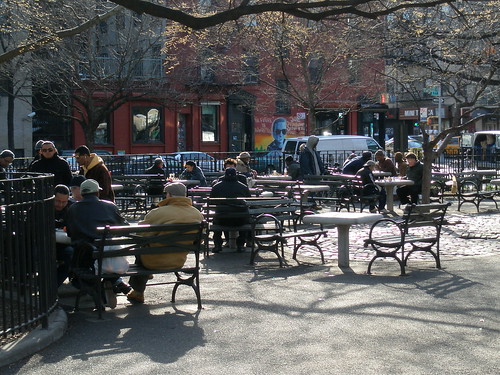 Kevin FarleyChess continues at Tompkins Square Park despite yesterday’s earthquake.
Kevin FarleyChess continues at Tompkins Square Park despite yesterday’s earthquake.When I was growing up in California, earthquakes were kind of fun. You got to hide under your desk or in your doorway, and whether you were in sixth or second grade your teacher always freaked out and rushed outside to the baseball field without providing any instruction to the kids.
The feeling of a southern California earthquake was unmistakable; it rattled the house and shook you with quick jolts. My sister and I would drop to the ground to feel the earth move, because we knew the sweet and powerful force would not last long. I loved earthquakes – their unpredictability, their distaste for shelves, and their short lifespan prevented me from getting bored. My mother used to tell me that earthquakes were the same feeling as riding the subway, which is maybe why I moved here (she was wrong). Read more…
Presenting Neighborhood Appeal, in which Villagers share their go-to spots and we appeal to readers to add their own. Today, Chicago transplant Katie Olson tells us where she likes to take her out-of-town visitors. We’re adding her recommendations to Foursquare, because – that’s right! – The Local is now on Foursquare. Just click the “Follow” button on our shiny new page and every time you “check in” at spots like the ones below, you’ll get tips from notable locals like Rachel Dratch and Christina Tosi; and from our savvy and sundry commenters and contributors, like restaurant guru James Traub. After you’ve pondered Katie’s list below, make your own additions in the comments and we’ll add those to our Foursquare page, too.
I moved to the East Village from Chicago last spring and as soon as summer came around, so did the visitors. Before I knew it, I had the tour down: walk across the Brooklyn Bridge; have a picnic in Central Park; walk through SoHo, the West Village and Little Italy, etc. I still love exploring the city, but my favorite part of having friends visit is showing them the neighborhood that I now call home. The East Village has a lot to offer, of course, and I always make a point of trying new things with out-of-towners; but I do have a few staples I take most of them to. As you’ll soon notice, my friends never go hungry. Read more…
 Brendan Bernhard
Brendan BernhardToday on The Local East Village, it’s all about cleaning house. First, from Brendan Bernhard, the second and final chapter of his harrowing tale about fighting bed bugs. And later, a professional organizer tells how you, too, can make a clean sweep.
If you thought bed bugs were bad enough (I certainly did), wait until you deal with exterminators – bed bug exterminators, that is. Let me tell you, they (or their bosses) are a demanding lot.
Evil sneaky blood-sucking nocturnal mattress-and-sofa infesting predatory vamps-without-glamour they may be, but bed bugs, unlike exterminators, don’t make you wash, dry, and dry clean every article of clothing in your possession. They don’t insist you empty your closets, drawers, file cabinets, and bookshelves, clean the contents therein, and then box them up in airtight containers before they will deign to submit your apartment (which must also be spick and span) to blasts of steam followed by potent doses of poison. In short, those foul vampiric insects that have infested New York do not force you to upend your life and take a good hard look at all the stuff you have accumulated despite spending half your time throwing things out in the interminable war against clutter. Read more…
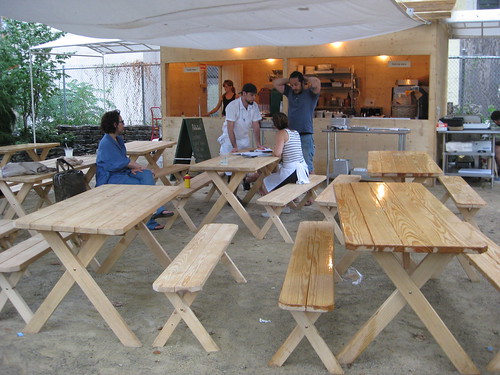 Kim DavisRoberta’s staff had time on their hands while patrons were locked out.
Kim DavisRoberta’s staff had time on their hands while patrons were locked out.Yesterday, two downtown residents were surprised to be turned away at the BMW Guggenheim Lab, the self-described “part urban think tank, part community center and public gathering space.” Following the first story about a woman and her dog, here’s the second— about a man and his stomach.
Yesterday’s launch of the cafe at the BMW Guggenheim Lab was a wash-out, but not because of the rain.
The cafe is operated by Roberta’s, a Brooklyn-based restaurant with a dizzying buzz factor. Opened as a casual wood-fired pizza joint in a former garage in a bleak, industrial corner of Bushwick, Roberta’s has steadily built a reputation not only for more ambitious food (think tripe and sweetbreads) but for a locavore ethic including herbs grown on the roof, home-baked bread and a Heritage Radio studio in the backyard. A collaboration between Roberta’s and a project to promote “innovative ideas for urban life” must have seemed a no-brainer.
So why did Roberta’s fans find themselves locked out of the compound last night, peering through the railings in the driving rain? The answer given by a door-tender around 6pm was that the screening of “Blank City” in an adjacent tent was sold out. “But we don’t want to go to the screening,” people cried. “We want to eat at the cafe.” Read more…
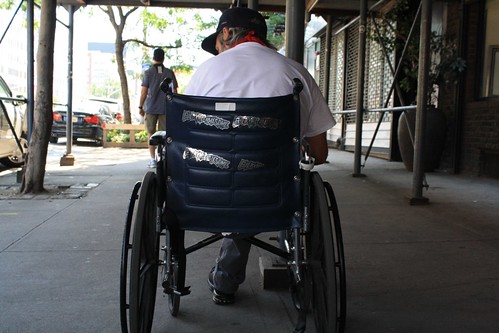 Michael Lefkovits
Michael LefkovitsOn Tuesday, a follower of The Local East Village’s Twitter page tweeted about how some East Villagers had helped a missing man back to his home. Seeing a counterpoint to the tragic death of Eason Alonzio, we asked her to tell us the whole story here.
On Tuesday night, my husband Ben and I settled in at Standings. The low-key sports bar has become the default home for one of our “integrate into America” projects: acquiring a love of baseball, or at the very least starting to work out what all the fuss is about. It’s not the most straightforward endeavor for a couple of Aussies raised to believe cricket is the best game on Earth. Becoming Mets fans has helped, though; we are culturally wired to support the underdog, and they fulfill the role with aplomb.
It was around 10:30 p.m. when we finished watching the Mets throw away their 8th-inning lead against the Marlins. Defeated and more than ready to be home, we crossed Second Avenue over to St. Marks, Ben pushing his bike ahead of me. In my peripheral vision I caught only a fleeting glimpse of what seemed to be a hunched figure leaning up against a tree trunk; it wasn’t until I had gone several feet further that the image even registered.
“Wait up,” I said to Ben, handing him my backpack as I returned to investigate.
An elderly man, perhaps 80 years old, was struggling to reach the walking cane he had dropped on the pavement. I picked up the cane and put it in his hand. He started talking in Mandarin. Within a few moments it became clear he spoke no English, but by this time he was holding my hand.
Read more…
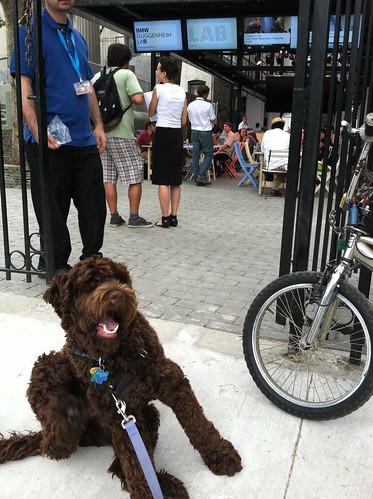 Emily Armstrong
Emily ArmstrongYesterday, two downtown residents were surprised when they were turned away at the BMW Guggenheim Lab, the self-described “part urban think tank, part community center and public gathering space.” Here’s the first story, involving a dog named Finn McCool.
I went to the Guggenheim Lab this afternoon, hoping to get a coffee and sit for a while on their picnic benches. I was barred from entry because, here’s a shocker: “Sorry, no dogs allowed.”
The explanation was that there is a cafe on the premises, hence no dogs.
“What about the recently closed and sadly missed Little Veselka down the block in First Park?”, I asked. “Dogs were welcomed there. They even sold a dog biscuit for fifty cents and left out bowls of water for thirsty pets. And, that was also on parks department, New York City property.
The Lab was far from crowded and there was plenty of room for me and Finn McCool (that’s his name).
The guy at the door said they would look into it.
A spokesperson for the Lab told The Local that “dogs are allowed in the park area but not the structure.” Is that the policy which is actually being implemented? What do you think? Should dogs be allowed into the think tank?
Update | 4:30 p.m. A spokesperson for the BMW Guggenheim Lab says that as of yesterday afternoon, “dogs are allowed to come into the park area but not the structure.”
Read No Quarter at the Guggenheim Lab, Pt. 2: Rebuffed at Roberta’s
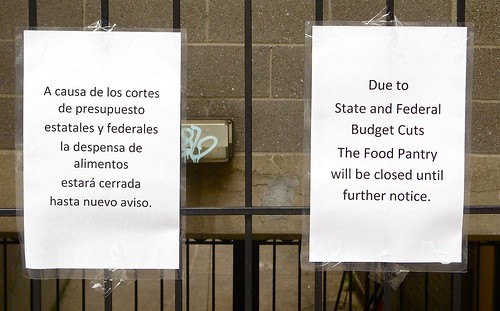 Tim Milk
Tim MilkThe Church of the Nativity has for many years serviced the less fortunate with their basement food pantry at 44 Second Avenue. Last week bilingual signs were posted advising locals that due to state and federal budget cuts, “The Food Pantry will be closed until further notice.”
Contrasts abound in the East Village. On one hand we see a fashionable epicenter with its glittering night life. But on the other one finds a place haunted by desperation. As families struggle to make ends meet, as unemployment takes its toll, as food prices rise, it is all the more regrettable to see a neighborhood food pantry shut for lack of funds.
It puts a very personal, poignant perspective on the rather circus-like proceedings in Washington over the debt ceiling. One has to wonder just how many food pantries must be closed in order to narrow State and Federal deficits.
Let us know what you think about the closure.
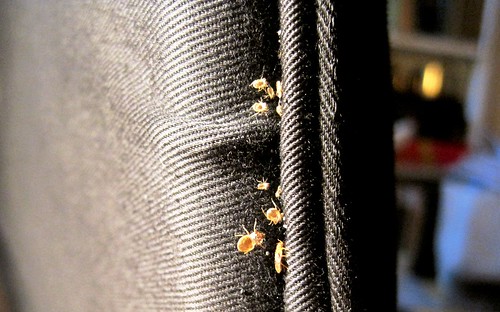 Brendan Bernhard
Brendan BernhardIt is said, on one of the many Web sites dealing with the subject, that bed bugs, when they attack their sleeping victims, leave a trail of “dark fecal spots (which are partly digested blood) on their host, mattresses, clothes, bedding, walls, ceiling, and every place you can imagine in a room.”
Except, it seems, when they don’t. Except when you are preyed upon by bed bugs who come equipped with their own federally funded clean-up crew — bugs which don’t feed but tidy up after the other bugs — ensuring that the dawn will reveal absolutely no sign of their vampiric brethren except for the clusters of hideous, madly itching welts on your legs and arms and torso.
This is the situation as I lie awake in bed at three in the morning, a copy of George Eliot’s “Middlemarch” propped up on a small cushion in front of me. I’m about 420 pages in, with about 420 pages to go, but it’s a challenge to concentrate. I keep swiveling around thinking I’ll catch a bug scooting purposefully toward me on the pristine sheet. I turn a flashlight on the curls of peeling paint behind the heating pipe and under the window sill, looking for anything that scurries…. Surely there must be something moving somewhere. After all, it’s feeding time.
Read more…
 Michelle Rick
Michelle RickIf you don’t live here in the East Village, you all naturally assume that we collectively get up around 10:30 a.m., rearrange our dreadlocks, drink coffee while sitting on a fire escape, admire the worn painted ads on the sides of our buildings, and then begin our long day of dance auditions before our bartending gigs start at 5 p.m.
You imagine that our clothes are beautifully tie-dyed and that our jewelry looks like we sprinkled a Tibetan souvenir shop onto ourselves. You picture us writing poetry on a bed of leaves in Tompkins Square Park, only raising our heads to drink wheatgrass smoothies. You are not wrong about any of this, and we are ALL like this.
However, it has recently come to my attention that real estate in the East Village is incredibly expensive.
Expensive to the point where if a group of roommates were to live in a two-bedroom apartment overlooking Pommes Frites and live the lifestyle described above, said group would need to be about 10 people to afford this kind of East Village abode, and that is not including the upkeep of dreads.
Read more…
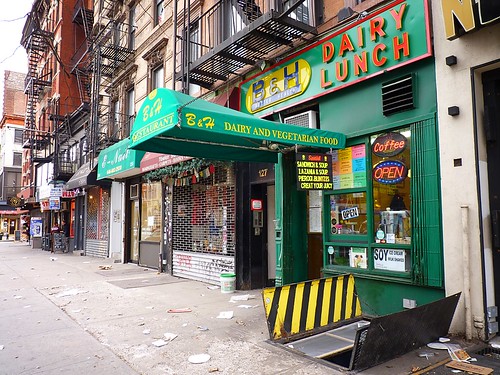 Vivienne Gucwa
Vivienne GucwaI walk into B&H Dairy and squeeze myself along the narrow aisle between the tables lining the wall and the stools lining the counter. The small deli restaurant is loud with people, the radio and the clattering of plates and bowls.
As usual, Raffi, the cook and maître d’ of sorts, an immigrant from Pueblo, Mexico, has a few things going at once on the grill: an omelet, a grilled cheese sandwich and some breakfast potatoes. While it cooks, he covers the food with a large aluminum foil container, which he then covers with a plate—he has a system in place. Up and down the counter are couples and friends laughing or in eye-locked huddles.
“You!” Raffi puts his hands out in a simulated hug. He wears a black Yankees cap turned to the back.
“Hey!”
“Where you been?”
“Oh, you know, around. I don’t come to this neighborhood that much anymore. I’m so glad you are here. I came in not too long ago and a guy was here I’d never seen before so I thought maybe you quit.” I throw my backpack under the counter on the tiny dirty ledge, and take out my notebook and pencil.
“Naw, I didn’t quit. That was my boss.”
Read more…
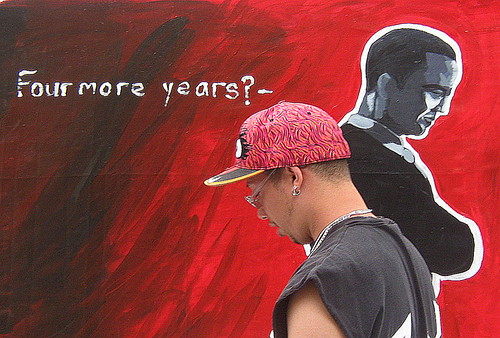 Susan Keyloun
Susan KeylounWhat is it? The name that’s missing from the East Village?
Think. It’s a name you would expect to hear, but don’t. A name you would expect to encounter in cafes and bars, on street corners and buses, in parks and in shops, in the lobbies of movie theaters and the changing rooms of gyms, on subway platforms and in supermarket lines, and wherever else East Villagers congregate.
The name, still so visible on the Web and audible on TV and radio, has vanished from the neighborhood. Yet it is (surely) the most famous name in the world. It begins with an “o,” and it ends with an “a”: OBAMA! Once it was on everyone’s tongue. Now, it seems, tongues would rather utter any name but that one. The name has been replaced by silence, by the absence of a name. It is a void people no longer know what to do with except to circle around it cautiously while naming other names — Palin, Beck, Murdoch, Cantor, Tea Partiers — as if warding off an evil spell.
There are other people besides Obama you rarely hear discussed these days. For instance, Clinton, Geithner, Bernanke, Biden, Pelosi. The names of those who hold the highest offices in the land are spoken aloud almost as rarely as those of Party officials in a Communist dictatorship. It’s as if merely whispering their names were a crime. It isn’t, of course, but somehow it feels inappropriate.
Read more…




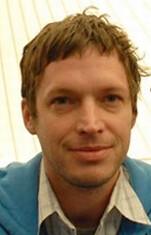





 Where Should You Take Those Out-of-Towners?
Where Should You Take Those Out-of-Towners?